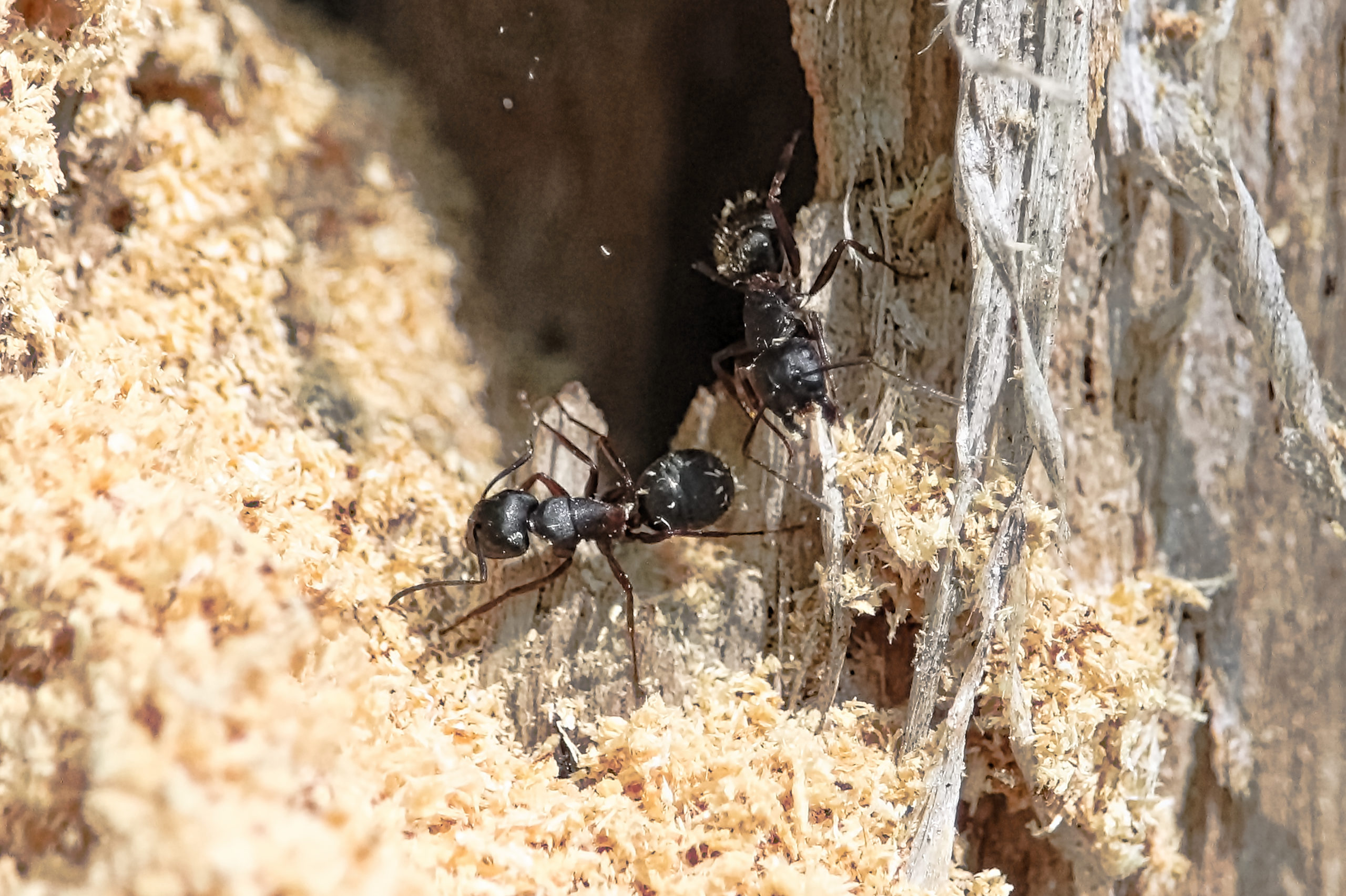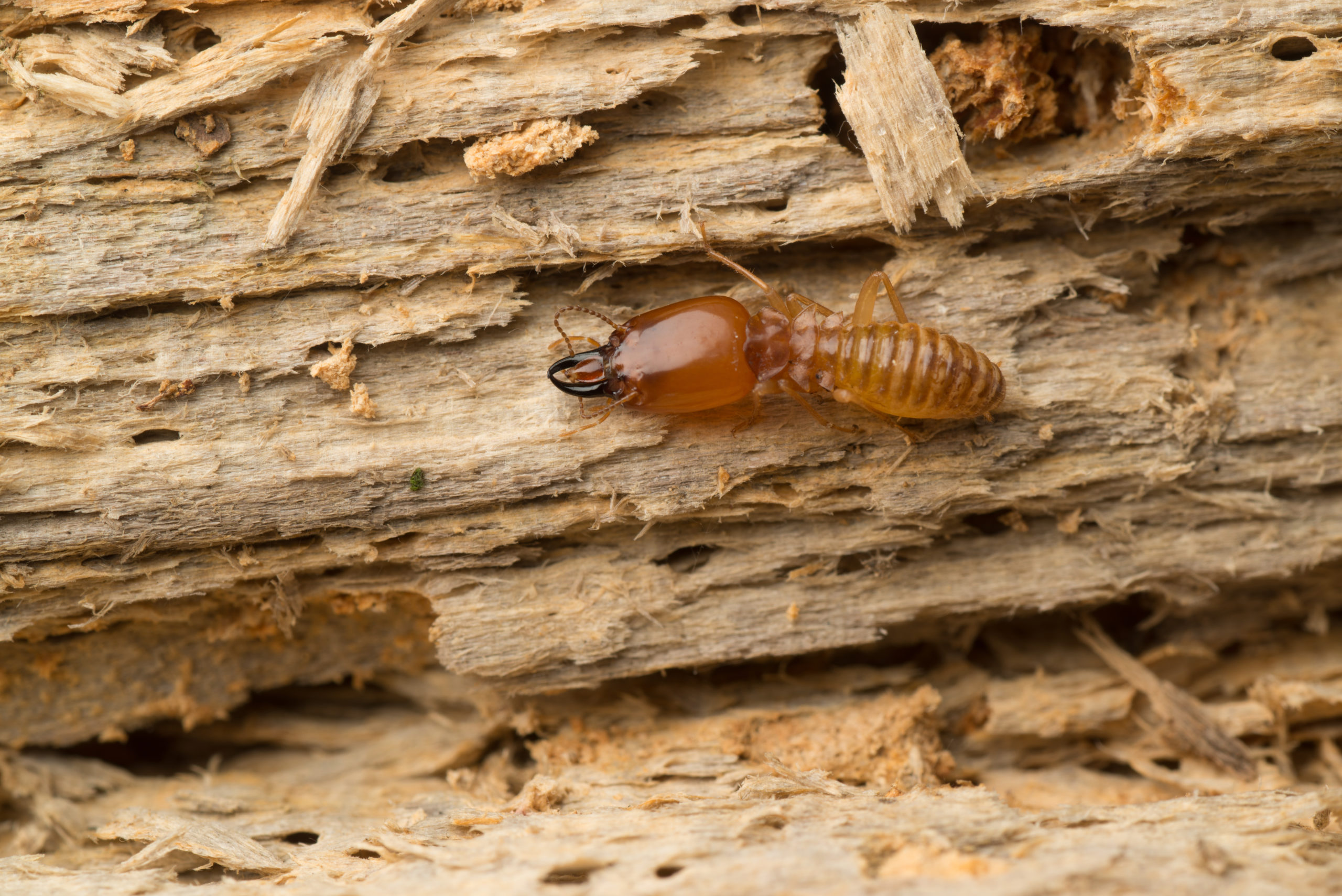What’s the Difference Between Carpenter Ants and Termites?
What’s the Difference Between Carpenter Ants and Termites?
Similar Pests
Ants and termites have a lot of similarities that can lead to some confusion between the two. Both are small, 6-legged, colony-based insects with a pair of antennae that swarm using two sets of wings when it’s time for them to mate, and… in the case of carpenter ants, they’re both wood-boring as well. Wood-boring insects are known for excavating through wooden structures in order to create a nest. As they do this, they often cause massive and unrepairable damage to the structures they inhabit… especially homes.
With so many similarities from their appearance to their destruction, how can you tell termites and carpenter ants apart? Surprisingly, they actually have more differences than similarities.

Body Shape
Most ants have very narrow waists, and carpenter ants are no exception. Their waists cinch in between their thorax and abdomen, providing an obvious separation between the two. Termites also have a clear separation between these portions of their bodies, but their waists are broad and far less defined.

Antennae
Antennae are made up of multiple different segments that are categorized into three basic parts: the scape, the pedicel, and the flagellum. The flagellum, is made up of various segments called flagellomeres which contain a variety of different specialized sensory cells and, depending on the insect, the shapes of the flagellum can differ rather drastically. Termites have moniliform antennae which means the flagellomeres are round in shape, resembling a straight string of beads. Ants, on the other hand, have geniculate antennae, with far smoother flagellomeres. Unlike most antennae, these contain a special elbow-like joint, changing direction partway through the length of the appendage and producing an inwardly bent shape.

Wings
While swarming to mate, both termites and carpenter ants have two sets of wings, but these wings are different in shape and size. Termite wings are fairly uniform in width throughout and both sets are also uniform in length. For ants, the bottom set of wings are much smaller (nearly by ½) and both sets have a tapered appearance becoming wider the further the wings are from the body.

Diet
Termites are infamous for dining on wood, and there’s a wide misconception that carpenter ants do the same, however, this is completely untrue. While carpenter ants are also woodboring insects, they do not actually consume the wood, rather, they chew it up and leave it behind as little piles of sawdust. This is often one of the first signs of a carpenter ant infestation. In lieu of wood, carpenter ants seek out sources of protein and sugar such as dead/live insects, meats, pet foods, jellies/jams, sugar, etc.

Taxonomy
The science behind the genetic makeup of these two creatures also sets them apart. Taxonomy is the scientific identification and classification of organisms through the use of hierarchical categories. All known creatures both alive and extinct have undergone taxonomic classification, from being members of a broad category, all the way down to their specific species. There are 8 taxonomic categories starting with the largest umbrella categories and becoming more specified with each following level. The categories include: Domain, Kingdom, Phylum, Class, Order, Family, Genus, and Species.
Taxonomically, termites are broken down as such:
Domain – Eukaryota
Kingdom – Animalia
Phylum – Arthropoda
Class – Insecta
Order – Isoptera
Family – There are several different families of termites (Termitina, Rhinotermiedae, Calotermitedae, Glyptotermitinae, Heterotermintinae, Mastotermitinae, Hodotermitini, Stolotermitinae)
While carpenter ants are categorized as the following:
Domain – Eukaryota
Kingdom – Animalia
Phylum – Arthropoda
Class – Insecta
Order – Hymenoptera
Family – Formicidae
Genus – Camponotus

Pests That Invade Packages & Boxes: How to Prevent Hidden Infestations
Pests That Invade Packages & Boxes: How to Prevent Hidden Infestations Pests That Invade Packages & Boxes: How to Prevent Hidden Infestations Summary: [...]
Keep Pests Out of Your Holiday Gatherings
Keep Pests Out of Your Holiday Gatherings Keep Pests Out of Your Holiday Gatherings Summary: The holiday season is all about good food [...]
Cold Weather vs. Warm Weather Infestations: How Temperature Shapes Pest Activity
Cold Weather vs. Warm Weather Infestations: How Temperature Shapes Pest Activity Cold Weather vs. Warm Weather Infestations: How Temperature Shapes Pest Activity Summary: [...]
Garden Pests Do Not Hibernate Indoors – How They Attack Houseplants And What To Do
Garden Pests Do Not Hibernate Indoors – How They Attack Houseplants And What To Do Garden Pests Do Not Hibernate Indoors – How They Attack [...]
The Scariest Pests (And Why They Freak Us Out)
The Scariest Pests (And Why They Freak Us Out) The Scariest Pests (And Why They Freak Us Out) Summary: A practical, homeowner-friendly guide [...]
Favorite Foods of Rats and Mice
Favorite Foods of Rats and Mice Favorite Foods of Rats and Mice Summary: Rats and mice are surprisingly picky about what they eat—especially [...]

